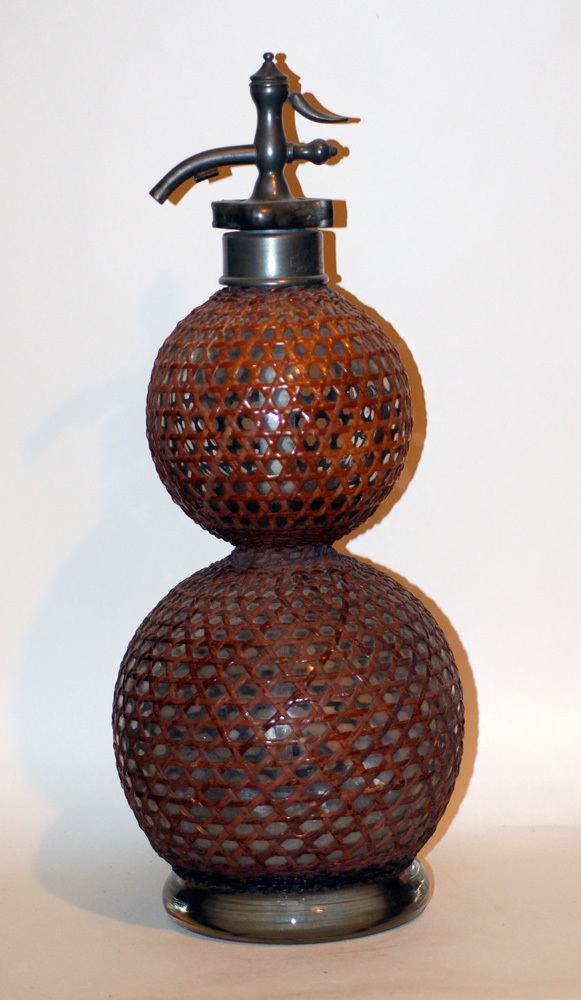 | ||
The gasogene (or gazogene or seltzogene) is a late Victorian device for producing carbonated water. It consists of two linked glass globes: the lower contained water or other drink to be made sparkling, the upper a mixture of tartaric acid and sodium bicarbonate that reacts to produce carbon dioxide. The produced gas pushes the liquid in the lower container up a tube and out of the device. The globes are surrounded by a wicker or wire protective mesh, as they have a tendency to explode.
The earliest occurrence of the word noted in the Oxford English Dictionary dates from 1853, quoting a reference in Practical Mechanic's Journal on "Gaillard and Dubois' 'Gazogene' or Aerated Water apparatus". A gasogene is mentioned as a residential fixture at 221B Baker Street in Arthur Conan Doyle's Sherlock Holmes story A Scandal in Bohemia: "With hardly a word spoken, but with a kindly eye, he waved me to an armchair, threw across his case of cigars, and indicated a spirit case and a gasogene in the corner." The device plays a key role in Bernard Shaw's 1905 comic play Passion, Poison, and Petrifaction, Or The Fatal Gazogene.
